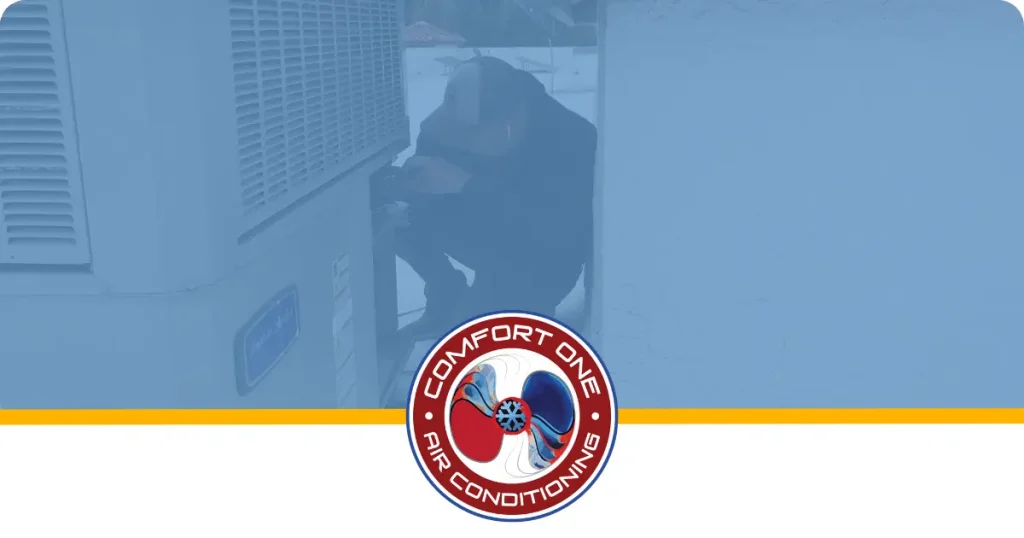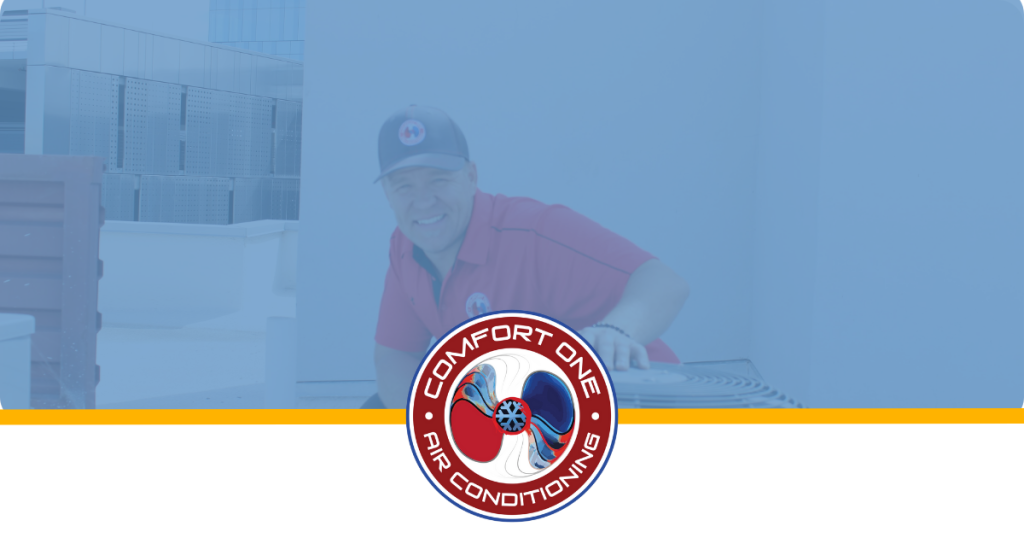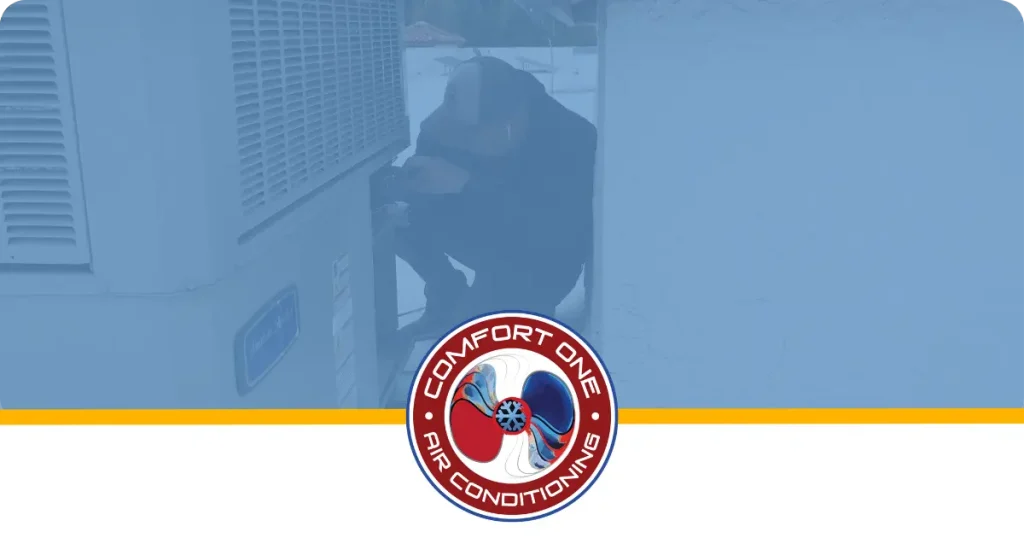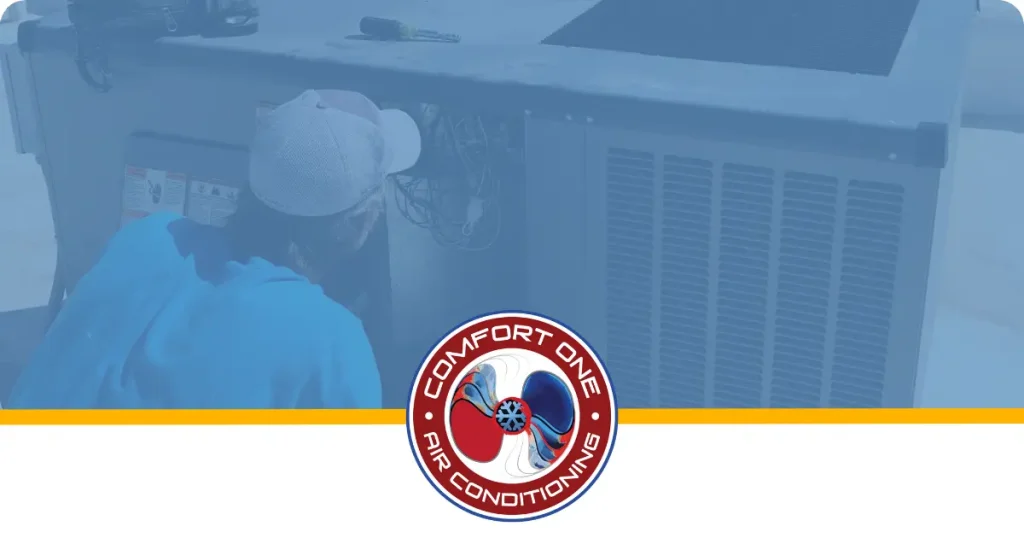When your air conditioning fails on the hottest day of summer, it’s more than just an inconvenience—it’s an emergency that can affect your comfort, health, and wallet. At Comfort One Air Conditioning, we’ve diagnosed and repaired thousands of AC systems over the years, giving us deep insight into the most frequent issues homeowners and businesses face. In this article, we’ll highlight common air conditioner issues and other common problems that can disrupt your cooling system.
Understanding common air conditioning problems can help you identify issues early, potentially saving hundreds or thousands of dollars in repair costs. While some problems require professional attention, others can be resolved with basic troubleshooting. This comprehensive troubleshooting guide draws from our extensive field experience to help you navigate the most common problems and challenges with air conditioning.
Key Takeaways
-
Air conditioning problems range from simple thermostat issues to complex refrigerant leaks
-
Regular maintenance and filter changes prevent most common AC problems
-
Warning signs include unusual noises, strange odors, and poor cooling performance
-
Unresolved AC issues can result in high energy bills due to increased energy consumption
-
Some issues like dirty filters can be DIY fixes, while electrical problems require professional help
-
Most AC units last 12-15 years before needing replacement
-
Early detection of problems saves money and prevents major system failures
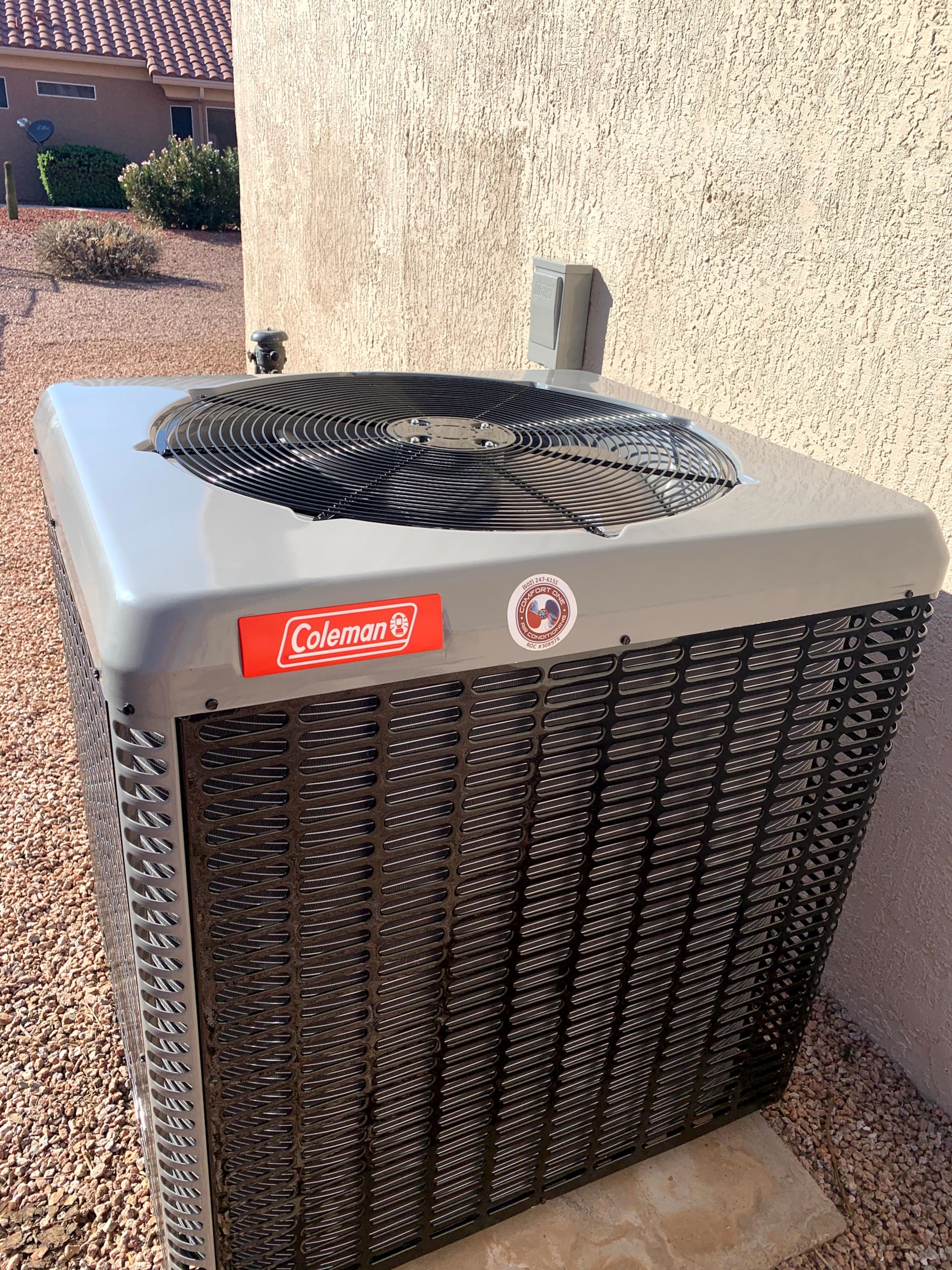
Air Conditioner Won’t Turn On
Nothing is more frustrating than discovering your ac unit won’t start when you need cold air the most. This common issue often has simple causes that you can check before calling an hvac technician. Many acs can be reset or inspected for common power issues as part of troubleshooting.
Check your thermostat batteries and settings Dead thermostat batteries are surprisingly common, especially in programmable and smart thermostats. Replace batteries annually as preventive maintenance, or immediately if your thermostat display is dim or blank.
Check your thermostat is set to cooling mode with proper temperature setting Ensure your thermostat setting is on “cool” mode and set at least 5 degrees below the current room temperature. Sometimes family members accidentally switch settings, preventing the system from activating.
Inspect circuit breaker panel for tripped breakers and reset if necessary Check your electrical panel for tripped breakers. AC systems draw significant power, especially during startup, which can trip breakers during peak usage periods or power surges. Reset any tripped breakers by switching them fully off, then back on.
Ensure outdoor unit is plugged in and receiving power Verify that your condenser unit outside hasn’t been accidentally unplugged or that the electrical connections remain secure. Look for any visible damage to wiring or electrical connections.
Look for loose electrical connections or damaged wiring Inspect visible wiring for signs of damage, corrosion, or loose connections. However, never attempt electrical repairs yourself—this requires a qualified hvac professional to ensure safety and prevent further damage.
Contact HVAC professional for electrical issues beyond basic checks If basic troubleshooting doesn’t restore power, you likely have an electrical issue, electric control failure, or component malfunction that requires professional diagnosis and repair.
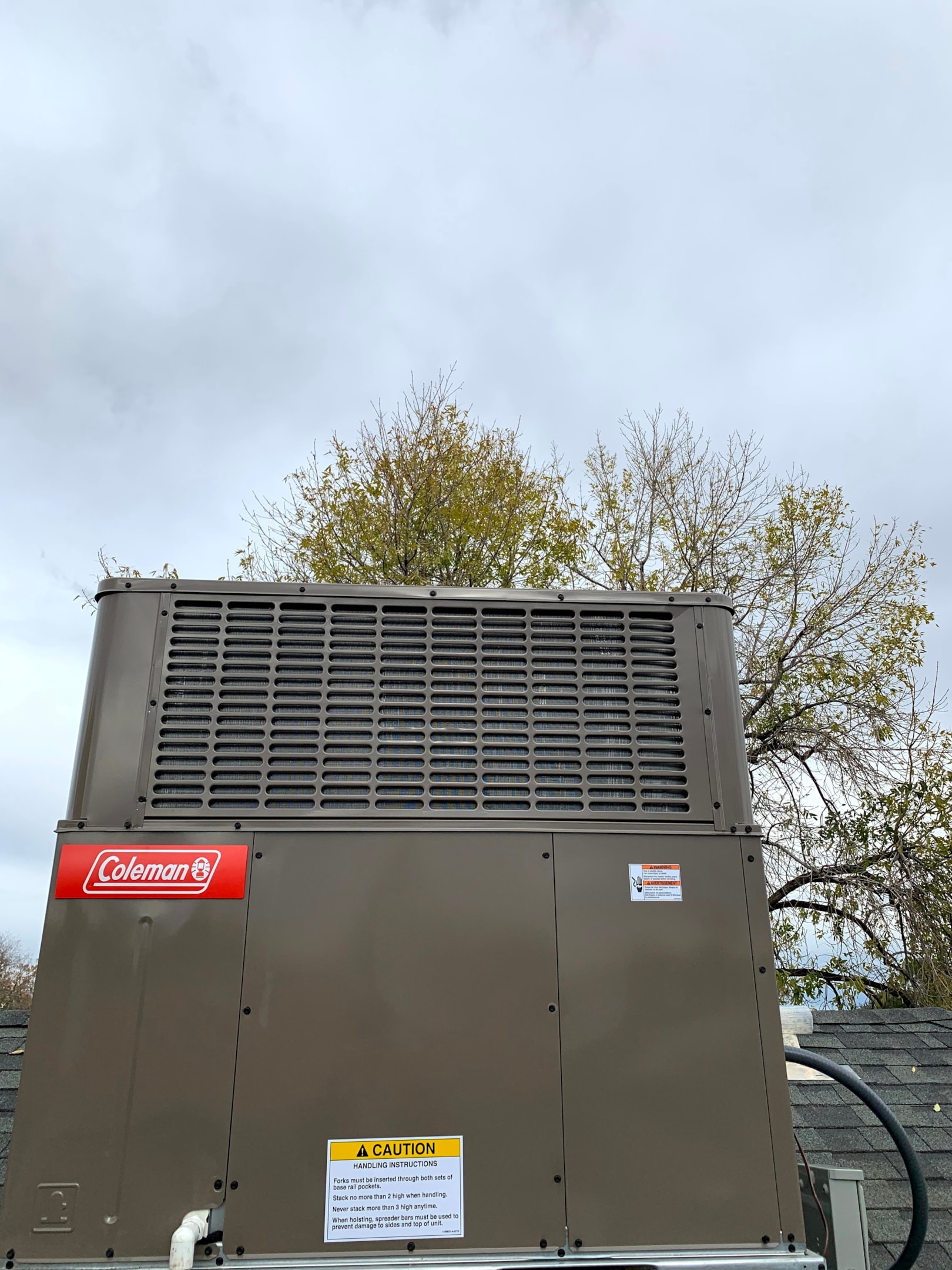
AC Running But Not Cooling
An air conditioning system that runs continuously but fails to provide cool air is one of the most common air conditioning problems we encounter. If your AC is not blowing cold air or is instead blowing hot air, there are several possible solutions to restore proper cooling. This issue typically stems from airflow restrictions, refrigerant problems, or heat transfer inefficiencies.
Replace dirty air filter that blocks airflow and reduces cooling efficiency A clogged air filter is the leading cause of poor ac performance. Dirty filters restrict airflow over the evaporator coil, reducing cooling capacity and forcing your system to work harder. Replace filters every 30-90 days depending on usage, pets, and indoor air quality conditions.
Check for blocked supply vents or return air grilles throughout the home Blocked vents significantly impact cooling performance. Ensure furniture, curtains, or other objects aren’t obstructing supply vents or return air grilles. Even partially blocked vents can reduce overall system efficiency and create uneven cooling.
Clear debris from around outdoor unit including leaves and dirt Your condenser unit requires adequate airflow for proper heat transfer. Remove leaves, grass clippings, and debris from around the outdoor unit, maintaining at least 2 feet of clearance on all sides. Clean the condenser coil with a garden hose to remove accumulated dirt and debris.
Inspect for ice buildup on evaporator coils or refrigerant lines Ice formation on coils or refrigerant lines indicates airflow problems or low refrigerant levels. If you discover ice, turn off the system immediately and allow complete thawing before investigating the underlying cause.
Verify refrigerant levels aren’t low due to leaks in the system Low refrigerant levels dramatically reduce cooling capacity. Signs include reduced cool air output, ice formation, and longer run times. Refrigerant leaks require professional repair—never attempt to add refrigerant without first locating and repairing the leak source.
Clean dirty condenser coils that prevent proper heat transfer Dirty condenser coils impede heat transfer, forcing your compressor to work harder and reducing overall efficiency. Professional coil cleaning is typically part of regular maintenance but may need more frequent attention in dusty environments.
Before calling a professional, try these troubleshooting steps and possible solutions to address issues with your AC not blowing cold air or blowing hot air.
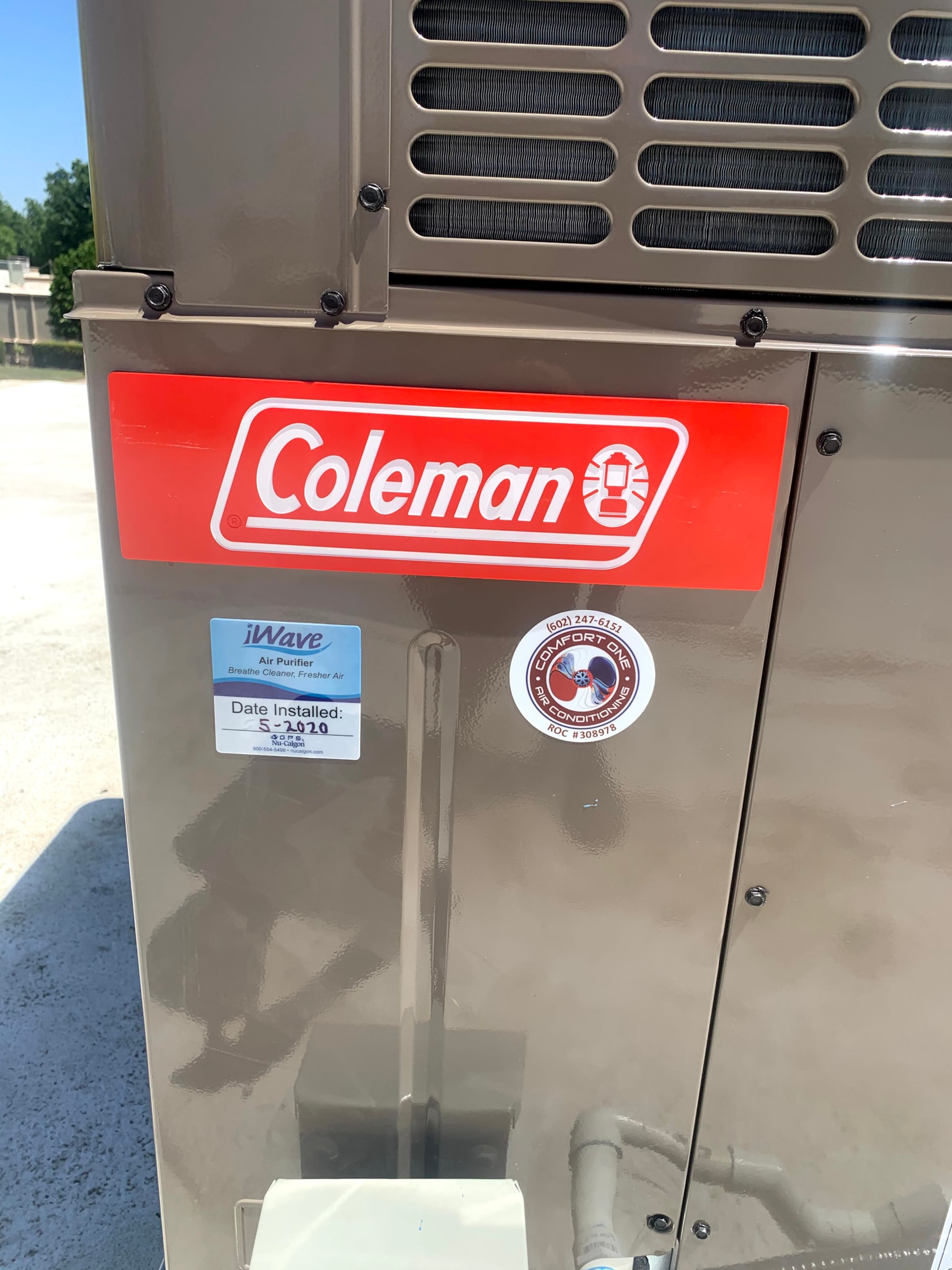
Air Conditioner Short Cycling
Short cycling occurs when your ac system turns on and off frequently without completing full cooling cycles. This problem accelerates component wear and can shorten your unit’s lifespan significantly if left unaddressed.
Replace clogged air filter causing system to overheat and shut down A severely dirty air filter restricts airflow, causing the system to overheat and trigger safety shutoffs. This protection mechanism prevents damage but results in short cycling that stresses components and reduces cooling effectiveness.
Check thermostat calibration and location away from heat sources Incorrect thermostat sensor placement near heat sources like direct sunlight, lamps, or appliances can cause false readings and short cycling. Ensure your thermostat is mounted level on an interior wall away from heat sources and drafts.
Ensure AC unit isn’t oversized for the space it’s cooling Oversized systems cool spaces quickly but fail to run long enough for proper dehumidification. This creates short cycling patterns and poor indoor air quality. Professional load calculations determine proper system sizing for your space.
Look for refrigerant leaks causing pressure imbalances Leaking refrigerant creates pressure imbalances that trigger safety shutoffs and short cycling. Signs include hissing sounds, oily residue near connections, and reduced cooling capacity. Professional leak detection and repair are essential.
Inspect electrical connections and capacitors for proper operation Failed capacitors, loose electrical connections, or faulty relays can cause intermittent operation and short cycling. These electrical issues require professional diagnosis and replacement to restore normal operation.
Have professional assess if compressor is failing or overheating Compressor problems often manifest as short cycling, especially if the unit struggles to start or makes unusual noises. Professional assessment can determine if repair or replacement is necessary.
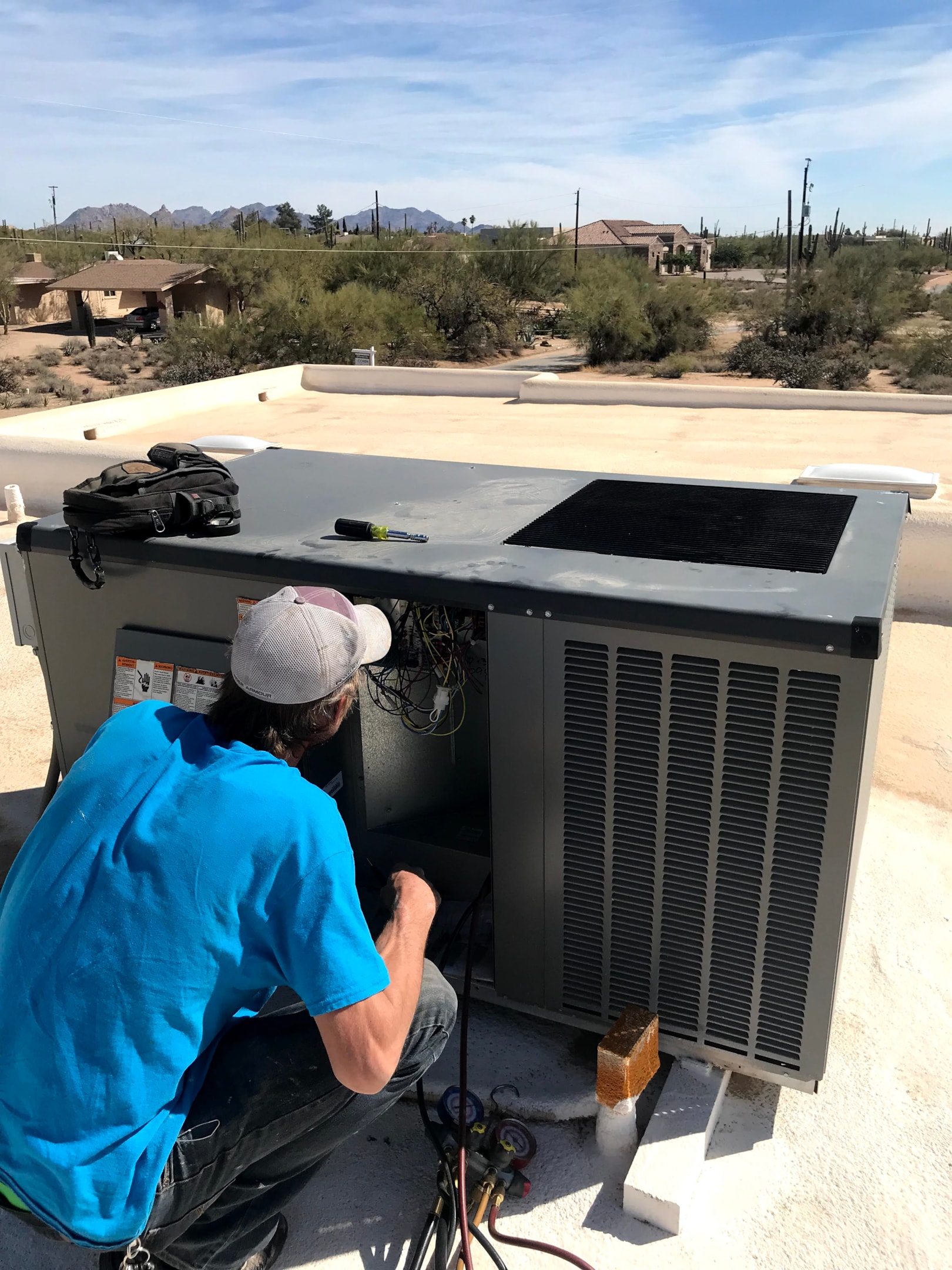
Strange Noises from AC System
Unusual sounds from your air conditioning system often indicate specific component problems. Understanding these sounds helps you assess urgency and determine when immediate professional attention is needed.
Squealing sounds often indicate worn or loose belt connections Squealing noises typically come from worn blower fan belts or motor bearings. While not immediately dangerous, these components should be inspected and replaced promptly to prevent more extensive damage.
Grinding noises may signal motor bearing problems requiring immediate attention Grinding sounds usually indicate serious motor bearing failure in the condenser fan motor or blower fan. These problems can lead to complete motor burnout if not addressed immediately. Shut down the system and call for professional service.
Rattling typically means loose panels, screws, or debris in the unit Rattling sounds often come from loose panels, screws, or debris that has entered the unit. While usually not dangerous, rattling can indicate mounting problems or foreign objects that need removal.
Hissing sounds can indicate refrigerant leaks or pressure issues Hissing noises often signal refrigerant leaks under pressure. Large leaks may be audible and require immediate attention. Small leaks might only be detectable during professional inspection but still need prompt repair.
Clicking noises during startup and shutdown are usually normal operation Some clicking during system startup and shutdown is normal as relays and electrical controls operate. However, persistent clicking throughout operation may indicate electrical control problems requiring professional diagnosis.
Turn off system immediately if burning smells accompany unusual sounds Any burning smell combined with unusual noises indicates potential electrical problems or overheating components. Immediately shut off the system and contact an hvac professional to prevent fire hazards or extensive damage.
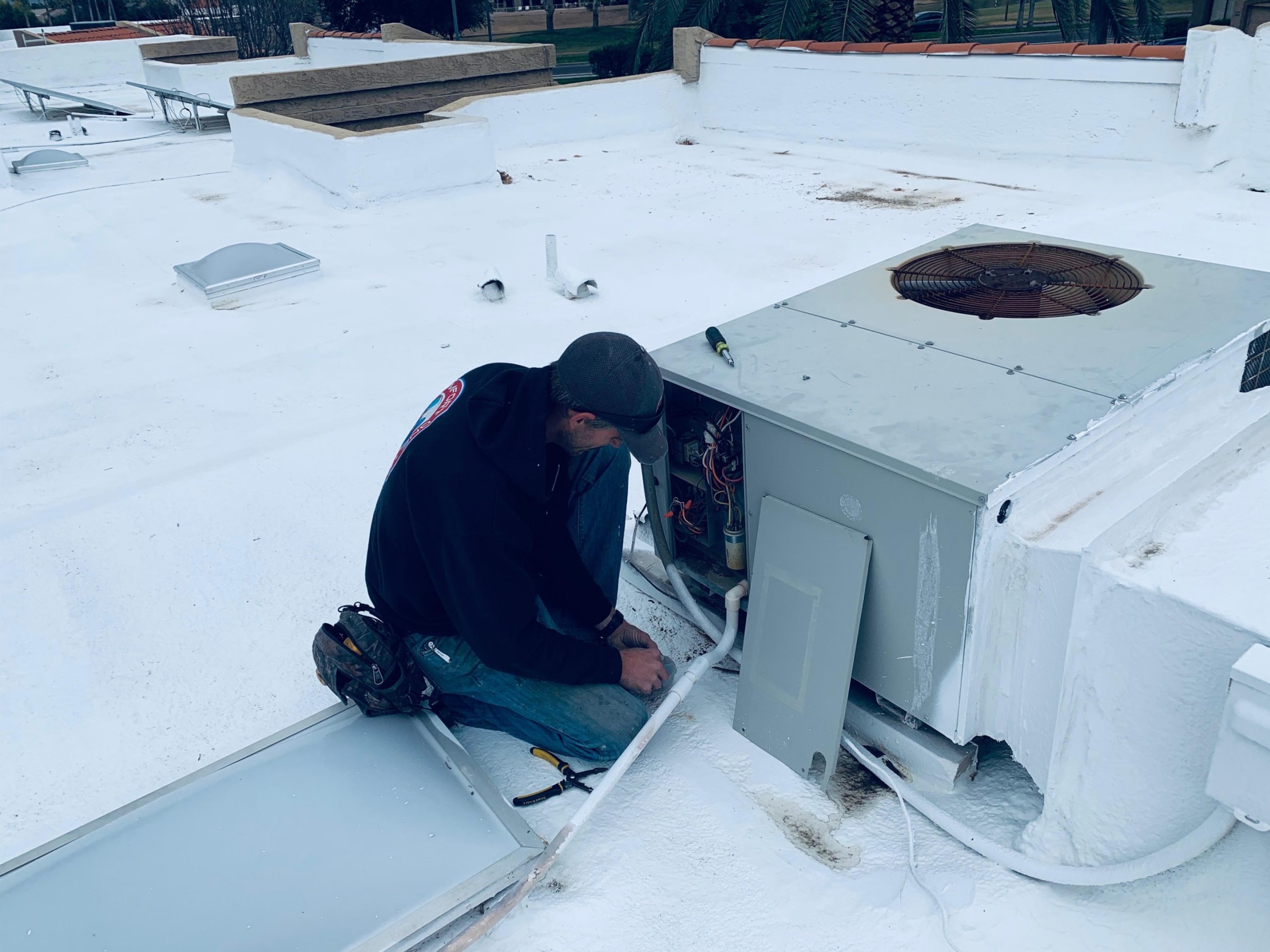
Water Leaks and Drainage Issues
Air conditioners naturally produce condensate during operation, but water leaking inside your home indicates drainage problems that need immediate attention to prevent property damage and maintain proper system operation.
Clear clogged condensate drain lines using wet/dry vacuum or compressed air Clogged drain lines are common causes of water leaking. You can often clear minor clogs using a wet/dry vacuum applied to the drain line opening, or compressed air blown through the line. Regular cleaning helps prevent clogs from algae and debris buildup.
Check condensate pump operation if system uses one for drainage Some installations use condensate pumps to move water vertically or horizontally to drainage points. Test pump operation by pouring water into the reservoir—the pump should activate automatically. Failed condensate pumps require professional replacement.
Inspect drain pan for cracks or improper positioning under evaporator coil Cracked or misaligned drain pans cause water to leak around the indoor unit. Check that the pan is properly positioned under the evaporator coil and inspect for cracks or rust damage that might allow water to escape.
Ensure proper installation level to allow gravity drainage AC units must be mounted level or with slight slope toward the drain to allow proper water flow. Settling or improper installation can create drainage problems that require professional adjustment.
Look for algae or mold growth blocking drainage pathways Algae and mold growth in drain lines can create persistent clogs. Professional cleaning with antimicrobial treatments may be necessary to prevent clogs and improve indoor air quality.
Address high humidity levels that can overwhelm drainage capacity Excessive humidity can overwhelm normal drainage systems. Consider supplemental dehumidification if your area experiences high humidity levels that strain your ac system’s moisture removal capacity.
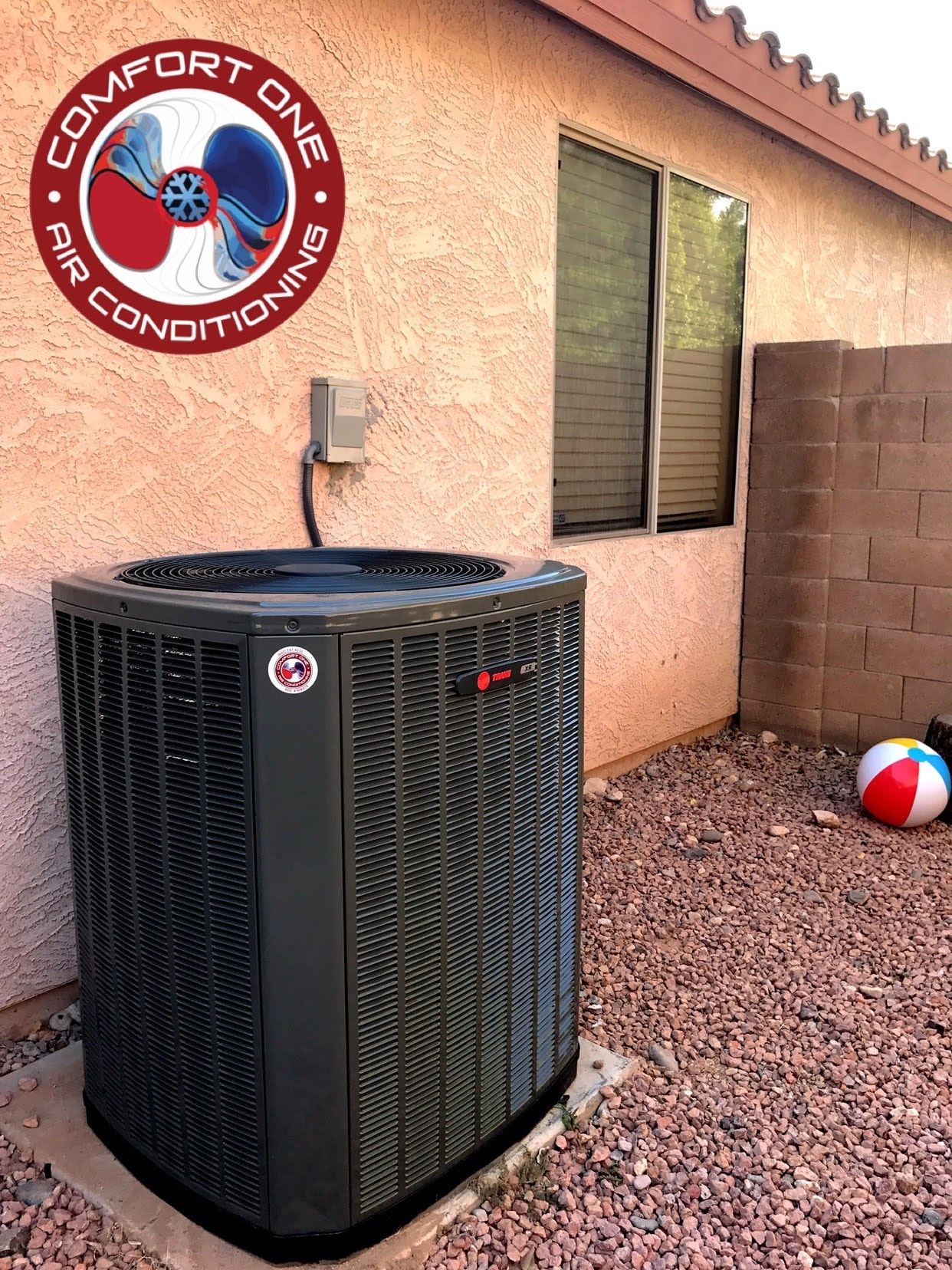
Frozen Evaporator Coils
A frozen evaporator coil is a serious problem that indicates underlying airflow or refrigerant issues. Ice formation prevents proper heat absorption and can damage your compressor if operation continues.
Turn off system immediately and allow complete thawing before operation Never operate your system with frozen coils. Shut off the unit immediately and allow 24 hours for complete thawing. Operating with ice can cause liquid refrigerant to reach the compressor, potentially causing catastrophic damage.
Replace dirty air filter that restricts airflow over coils Dirty air filters are the most common cause of frozen evaporator coils. Restricted airflow prevents proper heat transfer, causing coil temperatures to drop below freezing. Replace filters regularly to maintain proper airflow.
Check for blocked return air vents reducing air circulation Blocked return air vents reduce overall air circulation, contributing to coil freezing. Ensure all return vents are open and unobstructed by furniture, curtains, or other items that might restrict airflow.
Inspect blower fan operation and motor for proper speeds Malfunctioning blower fans reduce airflow over evaporator coils, leading to freezing. Check that the blower fan operates at proper speeds and moves adequate air across the coils during operation.
Have professional check refrigerant levels and pressure readings Low refrigerant levels can cause coil temperatures to drop excessively, resulting in ice formation. Professional technicians use gauges to check refrigerant pressures and identify leaks that need repair before recharging the system.
Verify ductwork isn’t collapsed or severely restricted Collapsed or severely restricted ductwork reduces airflow and can contribute to coil freezing. Professional ductwork inspection may reveal problems like collapsed flex ducts or blocked passages that require repair.
Refrigerant Leaks
Refrigerant leaks are serious problems that reduce cooling efficiency and pose environmental concerns. Modern refrigerants are regulated substances that require EPA-certified technicians for proper handling and disposal.
Look for oily stains or residue near indoor and outdoor units Refrigerant leaks often leave oily residue at connection points, joints, or damaged areas. Inspect visible refrigerant lines, particularly at joints and connections, for signs of oil stains that indicate active or previous leaks.
Notice reduced cooling capacity and longer run times Leaking refrigerant causes your system to lose cooling capacity gradually. You may notice the system running longer to maintain desired temperatures or struggling to reach thermostat settings on hot days.
Check for ice formation on refrigerant lines or coils Low refrigerant levels can cause ice formation on refrigerant lines or evaporator coils. This ice buildup indicates insufficient refrigerant flow and pressure imbalances that require professional attention.
Listen for hissing sounds indicating active leaks Large refrigerant leaks may produce audible hissing sounds as pressurized refrigerant escapes. These sounds are often most noticeable when the system first starts up or during high-pressure operation.
Have EPA-certified technician locate and repair leaks properly Refrigerant leak detection and repair require specialized equipment and EPA certification. Technicians use electronic leak detectors, soap solutions, and pressure testing to locate leaks accurately before making repairs.
Never attempt to add refrigerant without finding leak source first Simply adding refrigerant without repairing leaks is illegal, ineffective, and environmentally harmful. Proper repair involves finding and fixing the leak source, pressure testing the repair, and then recharging the system to manufacturer specifications.
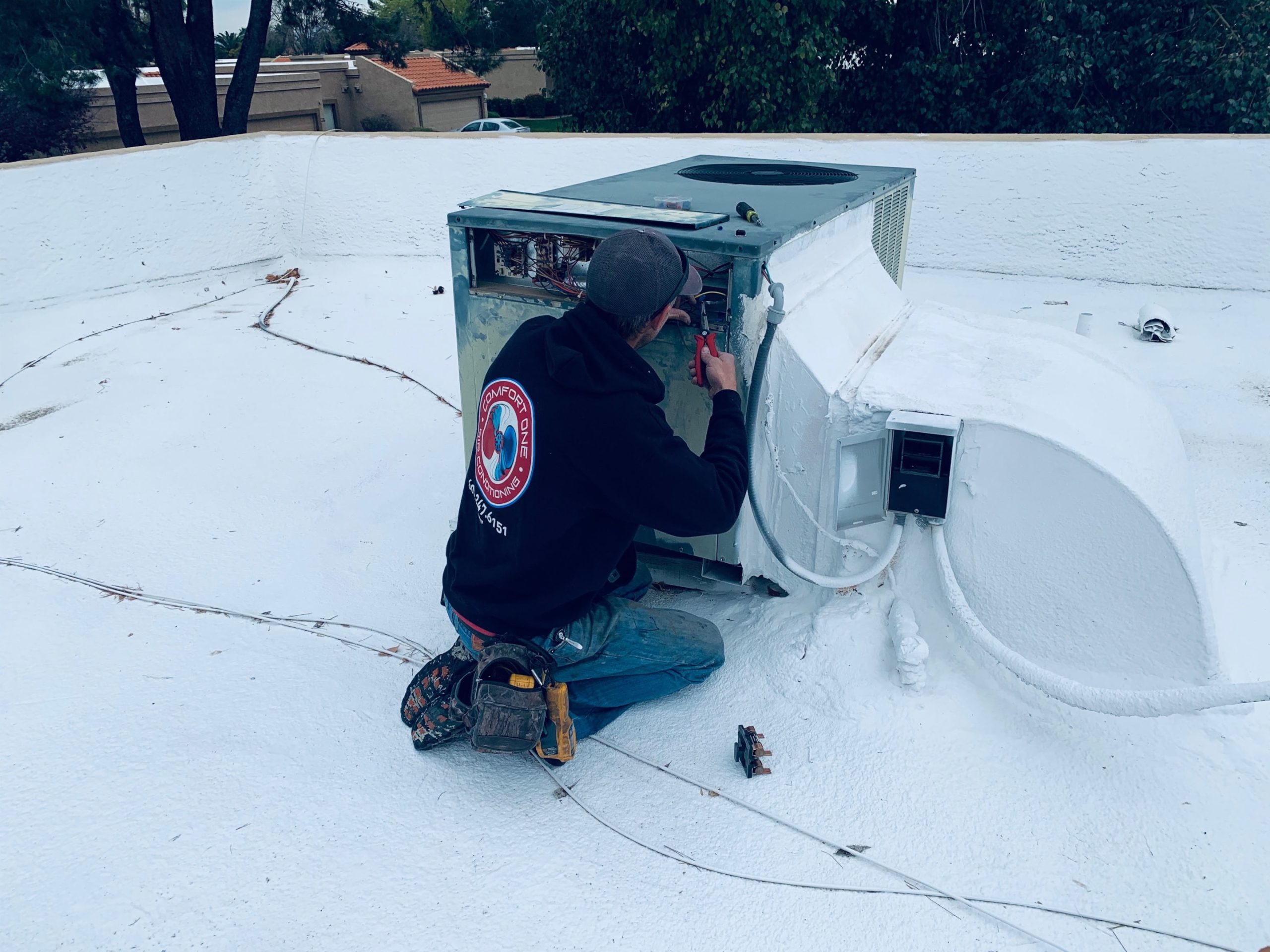
Electrical Problems
Electrical issues in air conditioning systems pose serious safety risks and require immediate professional attention. These problems can cause fires, equipment damage, and personal injury if not handled properly.
Check circuit breakers regularly for trips during peak usage periods AC systems draw significant electrical current, especially during startup. Monitor your electrical panel during peak cooling season for frequently tripping breakers, which may indicate electrical overload or component problems requiring professional assessment.
Look for burnt odors or visible damage to electrical components Any burning smell from your ac system indicates potential electrical problems. Inspect visible electrical connections for signs of burning, melting, or discoloration, but never touch damaged electrical components.
Test capacitors that help start compressor and fan motors Failed capacitors prevent proper compressor and fan motor operation. Signs include systems that won’t start, humming sounds, or motors that start slowly. Capacitor testing and replacement require professional service due to stored electrical charges.
Inspect wiring connections for looseness or corrosion damage Loose or corroded electrical connections create resistance, heat buildup, and potential fire hazards. Professional electricians should inspect and repair any damaged wiring or connections to ensure safe operation.
Verify proper voltage supply to outdoor and indoor units Inadequate voltage supply can damage AC components and reduce efficiency. Professional technicians can measure voltage levels and identify electrical supply problems that may require utility company or electrical contractor involvement.
Have qualified electrician address any electrical safety concerns Never attempt electrical repairs yourself. Qualified hvac professionals or electricians have the training, tools, and experience to safely diagnose and repair electrical problems without risking injury or further damage.
Circuit Breaker Trips
A tripped circuit breaker is a common issue that can leave your air conditioner suddenly unresponsive, especially during periods of heavy use. If your air conditioner stops working, the first step is to check your electrical panel for a tripped breaker. Resetting the circuit breaker may restore power, but if it trips again soon after, this points to a deeper electrical issue within your system.
Frequent circuit breaker trips can be caused by problems such as a malfunctioning condenser fan motor, overloaded circuits, or wiring faults. These issues not only disrupt cooling but can also pose safety risks. If your air conditioner continues to trip the breaker, avoid repeated resets and contact a qualified HVAC technician. A professional can safely diagnose whether the problem lies with the fan motor, electrical connections, or another component, and perform the necessary repairs to restore safe, reliable operation. Regular maintenance and prompt attention to electrical issues help prevent unexpected outages and protect your system from further damage.
Air Flow and Ventilation Issues
Proper airflow is essential for your air conditioning system to deliver consistent cooling and maintain energy efficiency. When airflow is restricted, your system has to work harder, which can lead to higher energy bills, uneven temperatures, and even premature system failure. Common causes of airflow problems include blocked vents, leaky ducts, and dirty or clogged filters.
To keep your air conditioning system running smoothly, make regular maintenance a priority. This includes cleaning or replacing air filters, inspecting ductwork for leaks, and ensuring that vents are not blocked by furniture, curtains, or other objects. If you notice weak airflow or certain rooms not cooling properly, it may be a sign of leaky ducts or an undersized system. Addressing these issues promptly helps maintain optimal cooling, improves indoor air quality, and extends the life of your air conditioner.
Dealing with Blocked Vents
Blocked vents are a frequent culprit behind poor air conditioning performance, often resulting in warm air, reduced efficiency, and higher energy bills. To address this, start by inspecting all vents throughout your home or business. Look for any obstructions such as furniture, rugs, toys, or accumulated dust and debris that may be blocking airflow.
Once you’ve identified a blocked vent, clear away any obstructions and clean the vent cover to ensure air can flow freely. Regularly cleaning your vents helps prevent dust buildup that can further restrict airflow. If you continue to experience issues after clearing visible blockages, the problem may be related to a malfunctioning blower fan or leaky ducts within your air conditioning system. In these cases, it’s best to consult an experienced HVAC technician who can diagnose and repair the underlying issue, helping restore your system’s efficiency and keep your energy bills in check.
Understanding Air Filter Importance
The air filter is a vital part of your air conditioning system, directly impacting both indoor air quality and system efficiency. A clogged air filter restricts airflow, forcing your system to work harder and potentially leading to higher energy bills, reduced cooling performance, and even system breakdowns.
To keep your air conditioning system running efficiently, make it a habit to check your air filter every month, especially during periods of heavy use. Clean or replace the filter as needed to prevent dust and debris from accumulating. Upgrading to a high-efficiency air filter can further improve indoor air quality by capturing smaller particles, which is especially beneficial for households with allergies or pets. Regular filter maintenance not only protects your system but also helps maintain healthy, comfortable air throughout your home.
Identifying Burning Smells
A burning smell coming from your air conditioner is a warning sign that should never be ignored. This odor can indicate serious issues such as electrical problems, a failing fan motor, or overheating components within the condenser unit. If you detect a burning smell, turn off your air conditioner immediately to prevent further damage or potential safety hazards.
After shutting down the system, inspect for obvious signs of trouble, such as frayed wires, scorched electrical connections, or visible damage to the unit. However, many electrical issues are hidden and require professional expertise to diagnose safely. Contact a qualified HVAC technician to thoroughly inspect your system, identify the source of the burning smell, and perform any necessary repairs. Regular maintenance, including checking electrical connections and cleaning the condenser unit, is key to preventing these issues and ensuring your air conditioner operates safely and reliably.
Poor Indoor Air Quality
Air conditioning systems significantly impact indoor air quality through filtration, humidity control, and air circulation. Poor air quality can affect health, comfort, and overall system performance.
Replace air filters monthly during peak cooling season Dirty air filters allow pollutants to circulate throughout your home while reducing system efficiency. During heavy usage periods, replace filters monthly to maintain good indoor air quality and protect your equipment.
Clean air ducts every 3-5 years to remove accumulated debris Ductwork accumulates dust, debris, and sometimes mold over time. Professional duct cleaning every 3-5 years removes accumulated contaminants and improves both air quality and system efficiency.
Check for mold growth in ductwork or around indoor unit Mold growth in air conditioning systems can spread throughout your home, affecting health and air quality. Inspect visible ductwork and around the indoor unit for signs of mold, which requires professional remediation.
Inspect humidity levels and consider dehumidification if needed High humidity promotes mold growth and reduces comfort even at proper temperatures. Consider supplemental dehumidification if humidity levels consistently exceed 50-60% or if you notice persistent moisture problems.
Ensure proper ventilation and fresh air intake Adequate ventilation prevents stale air and pollutant buildup. Some systems include fresh air intake features, while others may benefit from additional ventilation solutions to maintain healthy indoor air quality.
Consider upgrading to HEPA filters for better air filtration High-efficiency filters remove smaller particles than standard filters, improving air quality for people with allergies or respiratory conditions. However, high-efficiency filters may require system modifications due to increased airflow resistance.
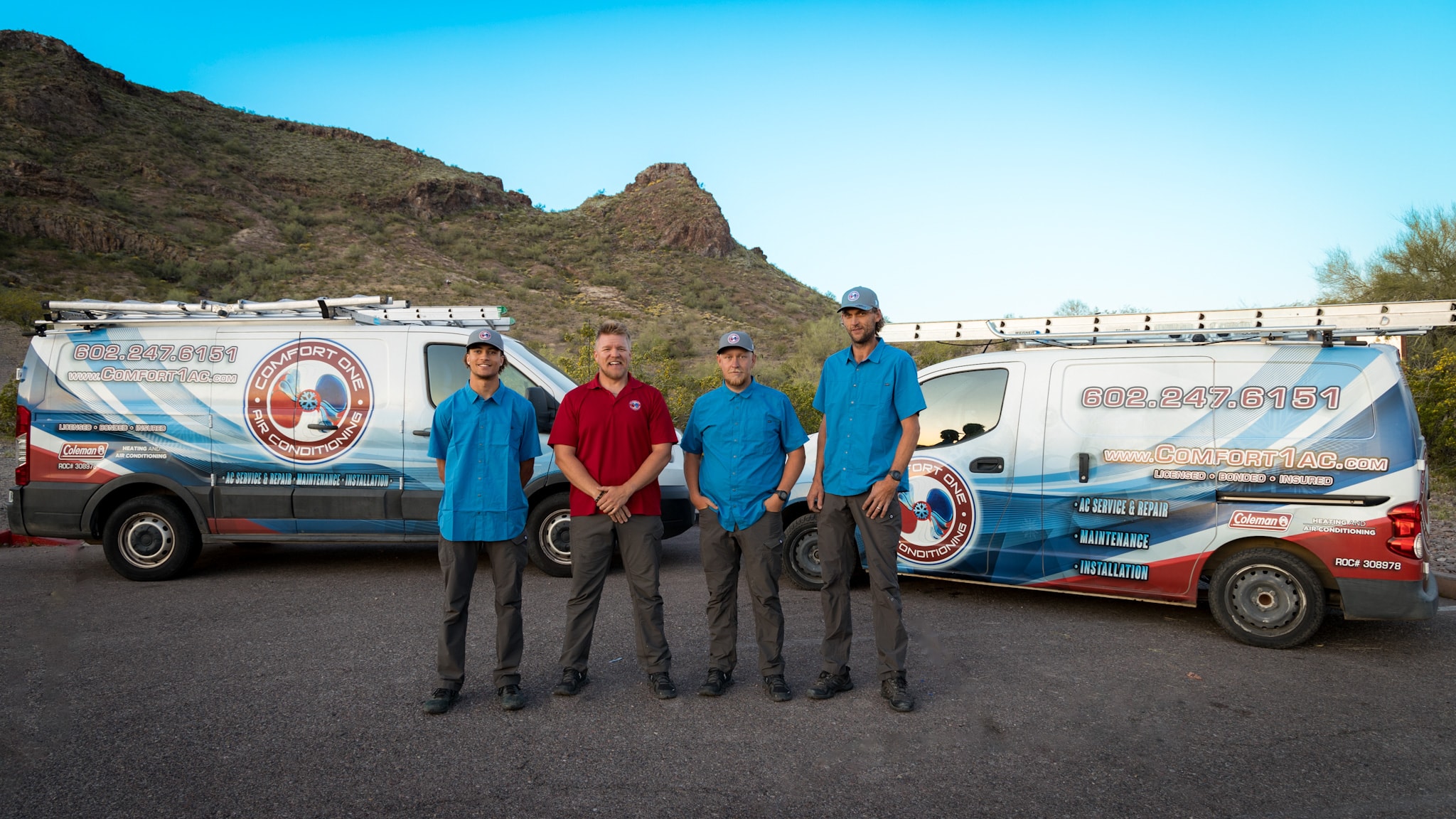
When to Call a Professional
While some air conditioning problems can be addressed with basic troubleshooting, many issues require professional expertise to ensure safe and effective repair. Understanding when to call an hvac technician protects your safety and prevents costly mistakes.
Electrical issues involving wiring, breakers, or motor problems All electrical problems beyond simple breaker resets require professional attention. Working with electrical components poses serious safety risks and may violate local codes or void warranties if performed by unqualified individuals.
Refrigerant leaks requiring EPA-certified technician handling Refrigerant work requires EPA certification due to environmental regulations. Only certified technicians can legally purchase refrigerant, perform leak repairs, and properly charge systems according to manufacturer specifications.
Compressor failures or major component replacements Compressor replacement is complex work requiring specialized tools, knowledge, and refrigerant handling certification. These major repairs often cost thousands of dollars and require professional assessment to determine repair versus replacement options.
Annual maintenance including coil cleaning and system tune-ups Professional maintenance includes tasks like coil cleaning, refrigerant pressure checks, electrical connection inspection, and performance testing that require specialized tools and training to perform safely and effectively.
System sizing evaluation for new installations or additions Proper system sizing requires detailed load calculations considering factors like insulation, windows, local climate, and usage patterns. Incorrectly sized systems cause efficiency problems, comfort issues, and premature component failure.
Energy efficiency assessments and upgrade recommendations Professional energy assessments identify opportunities for efficiency improvements, utility rebates, and system upgrades that can reduce operating costs and improve comfort while meeting current environmental standards.
Preventive Maintenance Tips
Regular maintenance prevents most common ac problems and extends system life significantly. A proactive approach saves money on repairs and ensures reliable operation when you need cooling most.
Schedule professional maintenance twice yearly in spring and fall Professional maintenance should occur before and after each cooling season. Spring maintenance prepares your system for summer demands, while fall maintenance addresses any problems that developed during heavy usage. Regular maintenance is important for all types of systems, including window units and those with both cooling and heating functions, to ensure optimal performance and prevent failures.
Change air filters every 30-90 days depending on usage and environment Filter replacement frequency depends on factors like pets, dust levels, and system usage. Check filters monthly and replace when they appear dirty or at manufacturer-recommended intervals.
Keep outdoor unit clear of vegetation with 2-foot clearance minimum Maintain adequate clearance around your condenser unit for proper airflow. Trim vegetation, remove debris, and ensure sprinkler systems don’t spray water directly onto the unit.
Clean supply and return vents monthly to maintain airflow Remove dust and debris from vents regularly to maintain proper airflow. Vacuum vent covers and ensure they remain unobstructed by furniture or other items.
Monitor energy bills for sudden increases indicating system problems Unusual increases in energy bills often indicate developing problems like dirty coils, refrigerant leaks, or component failures. Early detection through bill monitoring can prevent major repairs.
Keep maintenance records and warranty information organized Maintain detailed records of all maintenance, repairs, and warranty information. This documentation helps technicians diagnose problems and may be required for warranty claims or insurance coverage.
FAQ
How often should I change my AC filter? Replace air filters every 1-3 months depending on usage, pets, and air quality. During peak cooling season with pets or allergies, monthly replacement may be necessary. Check filters monthly and replace when visibly dirty.
Why is my AC blowing warm air? Common causes include dirty air filters, refrigerant leaks, thermostat issues, or blocked condenser coils. Proper airflow and correct refrigerant levels are essential to keep your house cool, especially during hot weather. Start by checking and replacing the air filter, then verify thermostat settings before calling for professional diagnosis.
How long do air conditioners typically last? Most ac units last 12-15 years with proper maintenance. Regular professional service, timely repairs, and quality installation can extend system life, while neglect can significantly reduce it.
Can I fix AC problems myself? Simple tasks like filter changes, thermostat battery replacement, and clearing debris are DIY-friendly. However, electrical work, refrigerant handling, and component replacement require professional expertise for safety and legal compliance.
What temperature should I set my thermostat? 78°F is recommended for optimal comfort and energy efficiency during summer. Each degree lower increases energy consumption by approximately 6-8%, so finding the highest comfortable setting saves money.
How much does AC repair typically cost? Minor repairs like filter replacement or thermostat issues cost $150-$500. Major component replacement such as compressor, condenser coil, or refrigerant circuit repairs range from $1,500-$4,000 depending on unit size and complexity.
Understanding these common air conditioning problems empowers you to identify issues early and take appropriate action. While some problems have simple solutions, others require professional expertise to ensure safe and effective repair. At Comfort One Air Conditioning, our experienced technicians have the knowledge and tools to diagnose complex issues and provide reliable solutions that restore your comfort quickly and efficiently.
Remember that preventive maintenance is your best defense against unexpected breakdowns and costly repairs. Regular professional service, combined with basic homeowner maintenance like filter changes and keeping outdoor units clear, can prevent up to 85% of emergency service calls. When problems do arise, early detection and professional intervention protect your investment and ensure continued reliable operation for years to come.
If you’re experiencing any of these air conditioning problems or want to establish a preventive maintenance program, contact Comfort One Air Conditioning today. Our certified technicians provide expert diagnosis, quality repairs, and comprehensive maintenance services to keep your system running efficiently all season long.
Author
-

Tapani Ojalehto is a RSI-top tech with over 15 years of experience in the HVAC industry. Tapani Ojalehto is the owner and founder of Comfort One Air Conditioning LLC, a HVAC company in Scottsdale, Arizona. Tapani enjoys hockey, archery, hunting, fishing and everything outdoors. He loves quality time with his wife Jessica of 15 years and their pup Loki Bear.
View all posts


